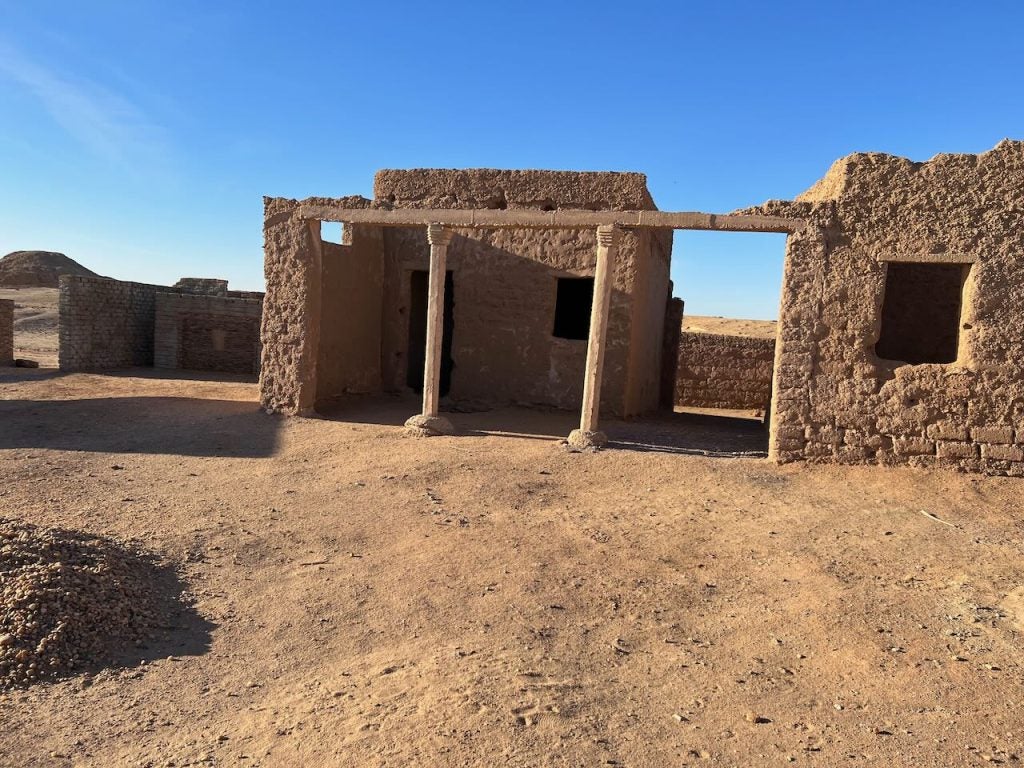In a Zoom meet-up in early February, Mr. Narbe Mansoruian’s sixth grade students at the Hollywood Schoolhouse in Los Angeles, California shared with us their questions and reflections on their participation in the Fall 2022 Nubia Odyssey. We (Michael Fahy and Jeff Stanzler) opened the meeting with Michael showing a handful of photos from his recent January visit this season to El Kurru and Jebel Barkal.
There was one particular experience from which I (Michael) had not taken any photos—but in retrospect wish I had—coinciding with the evening our team arrived in El Kurru following the six-hour drive from Khartoum. As we entered the village, we passed what was a doubtless common occurrence: a group of tourists filing back from the adjacent archaeological sites directly into the small cluster of jeeps and SUVs at the village’s edge, with virtually no contact or interaction with its inhabitants.
Not that these visitors were to blame. Meaningful encounters across the divides of geography, language and awareness rarely take place spontaneously: they need to be facilitated and structured in ways that require considerable thought, planning and effort. In this regard, one of the highlights of the trip was the visit of US Ambassador to Sudan, John Godfrey, to the site of El Kurru’s Cultural Heritage Center, which is the product of years of effort on the part of residents of El Kurru, Geoff Emberling and the archaeological team. The Center will be inaugurated later this year, affording future visitors an opportunity to enjoy a cup of tea or coffee while experiencing aspects of the life of the local community and interacting with some of its members.

With all of this in mind, we thought to remind the young people in Mr. Narbe’s class that, as is the case with El Kurru, archaeological sites are often located next to contemporary living communities and that visitors to those sites have much to gain from engaging with the people living next to them, and learning something about their lives, experiences, and the stories they have to tell…but, as was evident from Mr. Narbe’s students’ questions and comments, that was hardly necessary.
These were, after all, young veterans of an eight-week project in which, twice each week, they read reports from a number of “correspondents” on topics ranging from excavating a pyramid, to Anwar’s stories how people in El Kurru thought about and engaged with the pyramids, to the 1965 displacement of Nubians with the construction of the Aswan dam, to the creative work of cultural activists like Arbaab, Nabra and Mona, dedicated to preserving Nubian culture.
To be certain, there were Odyssey reports that resonated deeply with a certain not-only-adolescent attraction to the romance of archaeology: “What was the coolest thing you found while, like, doing archaeology in Sudan?” one student asked. (“Good question,” was Michael’s response. “Let’s see what an actual archaeologist might have to say—we’ll get back to you.”) But Mr. Narbe’s students were also interested in the tangible lives and lived experience of the people living in El Kurru: “Many people don’t know about El Kurru, for example, or Nubia, and how they live on a daily basis, and their culture. I think it’s really cool that we as a class got to learn that…” as another student said. This led to an interesting conversation about Nubia, and the difference between ancient kingdoms, contemporary nation states, and cultural identities that sometimes overlap current geopolitical borders.
This overlap might be otherwise characterized by the term “hybridity,” understood as the sense that one can and does live with multiple claims on her or his identity: one can be Egyptian or Sudanese and Nubian, American and Jewish, French and of Moroccan background. We are fond of describing the Earth Odyssey project as a “window and a mirror” in which, in the process of considering the accounts and stories of “exotic” lives (the window) lived on another side of the planet, one empathetically reflects on his or her own experience (the mirror) and recognizes the similarities.
We’ll end on this note, leaving the last words to one of Mr. Narbe’s students. “So you all live a long, long way from El Kurru,” Jeff asked our young charges, “and I’m wondering…I mean, I’m glad you found it interesting to study about it, but I’m wondering: Does it have anything to do with your life, your actual life?” To which one of the students responded with, “There’s so many different…ways people live, and so many different, like cultural things…there’s so much more in the world to learn, so it definitely changed a bit of my mindset…”
“So much more in the world to learn…” Agreed.
– Michael Fahy and Jeff Stanzler


